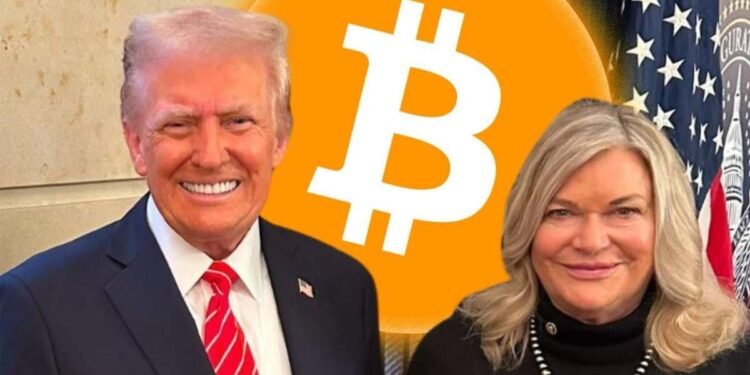Why Trump’s Digital Assets Executive Order Might Be Short-Lived and How Senator Lummis is Leading the Charge 🚀
The dynamic realm of digital assets is constantly influenced by political developments, leading to significant shifts in the ecosystem. Former President Trump’s Digital Assets Executive Order is under intense examination, with many speculating on its longevity. At the heart of this debate is Senator Cynthia Lummis, a staunch supporter of cryptocurrency and blockchain technology, who is pushing for balanced regulatory frameworks.
A Closer Look at Trump’s Digital Assets Executive Order 🏛️
Trump’s executive order was launched with the intention of instituting comprehensive regulations across digital assets, targeting various cryptocurrencies and blockchain technologies. Initially heralded as a pivotal step towards clearer market guidelines, the order has been criticized for potentially inhibiting innovation and imposing excessive control on a rapidly evolving sector.
The Key Issues with the Executive Order:
- Rigidity: The executive order is viewed as inflexible, with critics arguing that a rigid regulatory approach could impede the flexibility essential in a sector driven by innovation and swift technological changes.
- One-Size-Fits-All Approach: A standardized regulation is unlikely to cater to the diverse and nuanced aspects of digital assets, which require tailored oversight strategies.
Senator Lummis: Advocating for a Balanced Approach ⚖️
Senator Cynthia Lummis, a Republican from Wyoming, has emerged as a prominent figure advocating for the thoughtful integration of digital assets into the broader financial system. With a deep passion and understanding of blockchain technology, Senator Lummis is championing a regulatory framework designed to spur innovation while ensuring consumer protection.
Key Components of Lummis’ Strategy:
- Innovation-Friendly Policies: Lummis emphasizes the need for regulations that nurture rather than hinder innovation.
- Ensuring Consumer Protection: While promoting technological advances, Lummis also underscores the importance of safeguarding consumers within the digital asset landscape.
- Legislative Education: Lummis advocates for a deeper understanding among legislators of blockchain’s transformative capabilities, stressing that knowledge should govern the regulatory process as opposed to fear.
Why the Industry Supports Lummis’ Vision 🌟
Within the cryptocurrency community, Lummis’ approach is largely seen as a prudent path forward. Her focus on informed regulation as opposed to blanket restrictions resonates well with a community that prizes decentralization and continuous innovation. This perspective has garnered support among investors and tech enthusiasts who are wary of over-regulation stalling the growth of the digital economy.
Reasons for Industry Backing:
- Prioritizing Dialogue: Lummis promotes communication among stakeholders, serving as a model for legislative adaptation in the face of technological evolution.
- Cohesion Between Old and New Financial Systems: Her vision fosters an ecosystem where both nascent startups and established financial institutions can coexist and thrive.
Conclusion: The Path Ahead for Digital Assets 💡
As dialogues around Trump’s Digital Assets Executive Order persist, the influence of policymakers like Senator Lummis is becoming ever more vital. Her visionary stance signifies a roadmap that places technological advancement at the forefront while maintaining ethical industry practices.
The debate will likely continue, but the effort to find a balance between innovation and regulatory control is shaping a more integrated financial system. By championing leaders who appreciate the full potential of blockchain technology, the future of digital assets appears hopeful.
Engage With Us: What do you think of the ongoing legislative efforts in the digital asset space? Is Senator Lummis steering us in the right direction? Leave your comments and join the discussion! 💬
By recognizing and aligning with these dynamics, stakeholders can more effectively navigate the complicated landscape of digital finance, ensuring that innovation and adaptation progress hand in hand.



















































